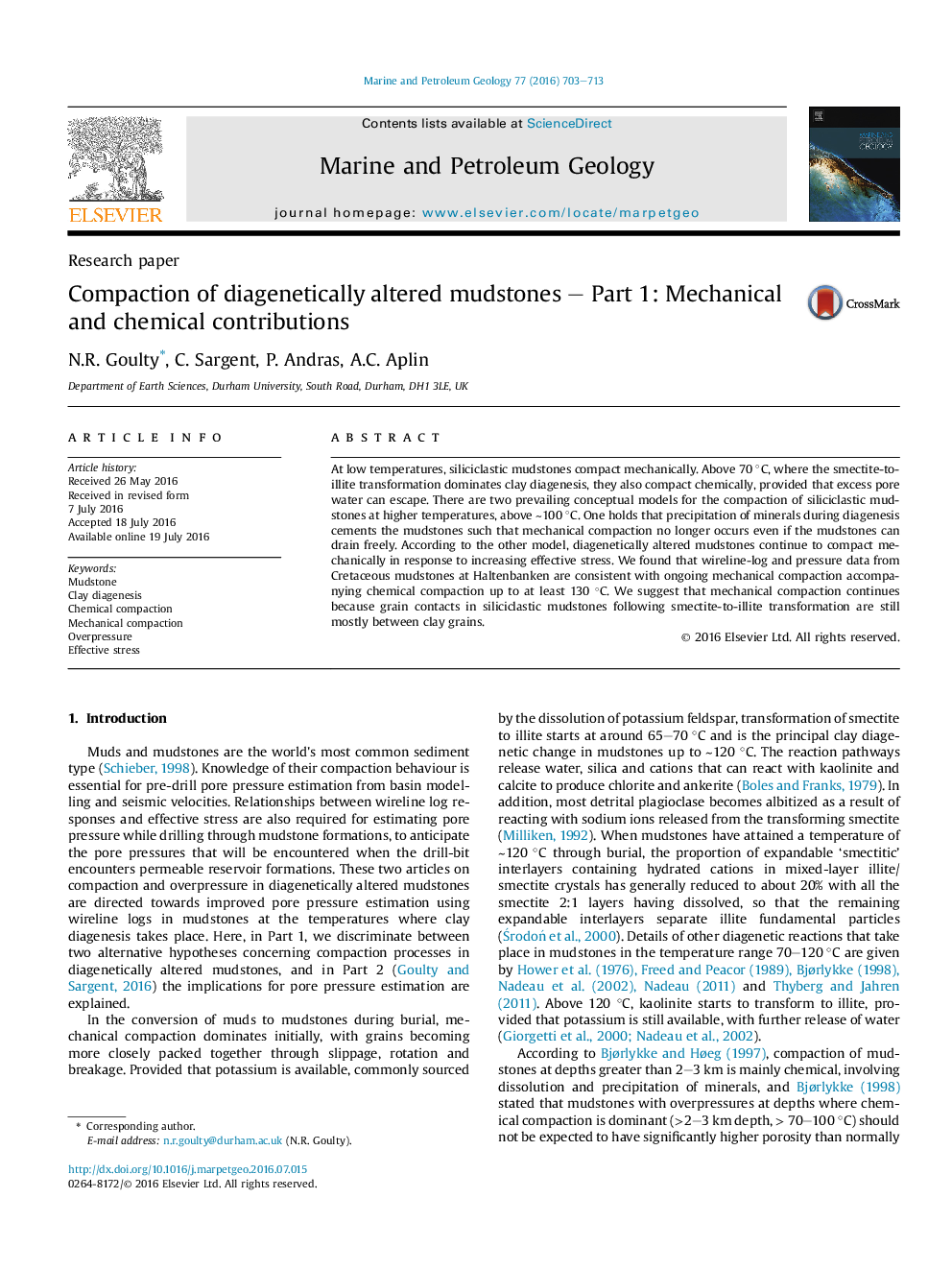| Article ID | Journal | Published Year | Pages | File Type |
|---|---|---|---|---|
| 6434602 | Marine and Petroleum Geology | 2016 | 11 Pages |
â¢We investigated compaction hypotheses for diagenetically altered mudstones.â¢The study used well data from Cretaceous formations at Haltenbanken.â¢Overpressure is due to disequilibrium compaction and clay diagenesis.â¢Mechanical compaction continues up to temperatures of at least 130 °C.â¢The hypothesis that mudstones only compact chemically above 100 °C is falsified.
At low temperatures, siliciclastic mudstones compact mechanically. Above 70 °C, where the smectite-to-illite transformation dominates clay diagenesis, they also compact chemically, provided that excess pore water can escape. There are two prevailing conceptual models for the compaction of siliciclastic mudstones at higher temperatures, above â¼100 °C. One holds that precipitation of minerals during diagenesis cements the mudstones such that mechanical compaction no longer occurs even if the mudstones can drain freely. According to the other model, diagenetically altered mudstones continue to compact mechanically in response to increasing effective stress. We found that wireline-log and pressure data from Cretaceous mudstones at Haltenbanken are consistent with ongoing mechanical compaction accompanying chemical compaction up to at least 130 °C. We suggest that mechanical compaction continues because grain contacts in siliciclastic mudstones following smectite-to-illite transformation are still mostly between clay grains.
